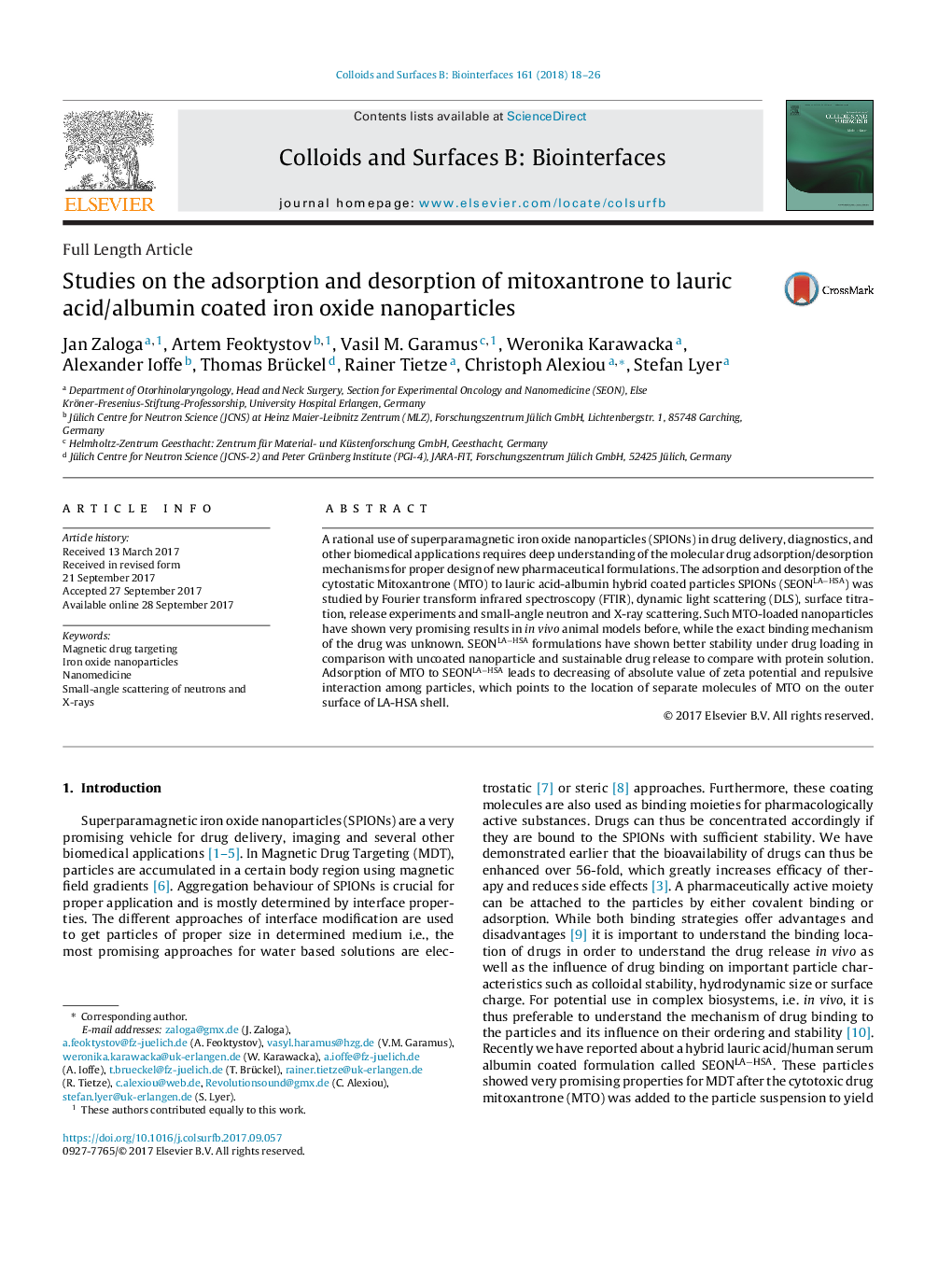| Article ID | Journal | Published Year | Pages | File Type |
|---|---|---|---|---|
| 4982710 | Colloids and Surfaces B: Biointerfaces | 2018 | 9 Pages |
â¢Mitoxantrone has high affinity to albumin coated iron oxide nanoparticles.â¢Albumin coated particles show sustainable release of Mitoxantrone.â¢Drug adsorption promotes repulsive interaction between the particles.â¢Mitoxantrone most likely interacts with the albumin shell of the particles.
A rational use of superparamagnetic iron oxide nanoparticles (SPIONs) in drug delivery, diagnostics, and other biomedical applications requires deep understanding of the molecular drug adsorption/desorption mechanisms for proper design of new pharmaceutical formulations. The adsorption and desorption of the cytostatic Mitoxantrone (MTO) to lauric acid-albumin hybrid coated particles SPIONs (SEONLAâHSA) was studied by Fourier transform infrared spectroscopy (FTIR), dynamic light scattering (DLS), surface titration, release experiments and small-angle neutron and X-ray scattering. Such MTO-loaded nanoparticles have shown very promising results in in vivo animal models before, while the exact binding mechanism of the drug was unknown. SEONLAâHSA formulations have shown better stability under drug loading in comparison with uncoated nanoparticle and sustainable drug release to compare with protein solution. Adsorption of MTO to SEONLAâHSA leads to decreasing of absolute value of zeta potential and repulsive interaction among particles, which points to the location of separate molecules of MTO on the outer surface of LA-HSA shell.
Graphical abstractDownload high-res image (90KB)Download full-size image
